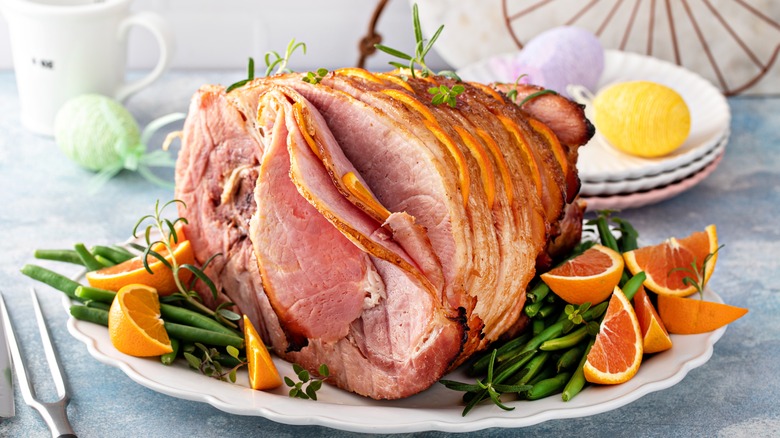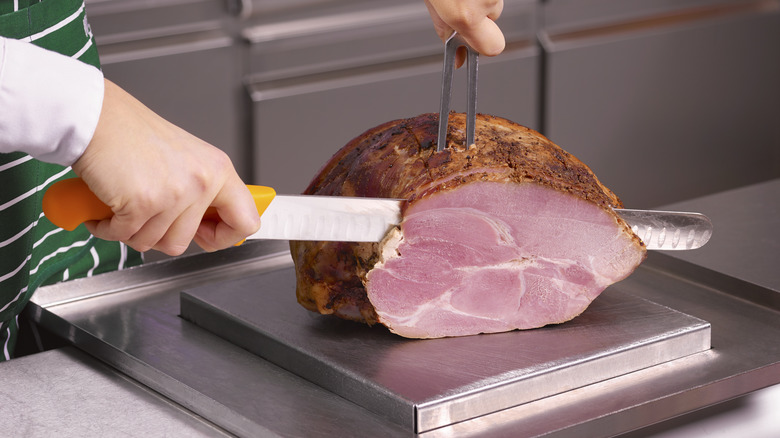What Part Of The Pig Is Used For Ham?
Ham is often a staple of holiday dinners, and a whole one easily feeds most families. While delicious, few people stop to think about what part of the pig ham comes from, and unlike ribs, belly, and shoulder cuts, there really isn't anything in the name to clue you in. Don't worry, though; ham doesn't have any secretly weird origins or anything. Instead, it comes from the back legs of a pig.
What we call ham can be divided into two parts: the rump and shank. The rump comprises the upper portion of the leg, and the shank is the lower portion found above the hock. What most people eat during the holidays comes from the shank, which contains only the femur bone, assuming it hasn't been removed. Although this type of ham is affordable, it can dry out quickly during cooking, though you can avoid this with the right ham cooking tips and tricks. That said, the rump is actually better suited for roasting, and it tends to be more tender but more expensive. The caveat is that it can be harder to carve if it's not boneless because of the femur and aitch bones.
Aside from location, another way ham differs from other cuts is the presence of preservatives, which often gives ham a longer shelf life than pork chops. For instance, you've probably seen cured and uncured ham at the grocery store before. Both are technically cured to prolong their shelf lives; the only difference is that cured ham uses nitrates or nitrites, and uncured uses more natural ingredients, like celery powder and salt. These curing processes are also one reason why ham tastes so markedly different from other pork cuts.
Hams aren't just for the holidays
Although most people buy and cook hams during large holidays like Easter, Thanksgiving, or Christmas, no rule says those are the only times you can cook them. In fact, there's never a bad time to cook a whole ham because there is so much you can do with it and the leftovers. While ham can keep in the fridge for three to five days after it's cooked you can also cut it up and freeze it for up to two months. This gives you ample time to use your ham to make many delicious dishes without going out and buying fresh meat.
Not only can you use it to make the best ham salad, but leftover ham can be used in many different soups. For example, savory ham and potato, ham and bean, and split pea soups are great ways to incorporate leftover ham in a filling and delicious way. Ham can also be used in a variety of breakfast foods like egg bites, omelets, egg scrambles, frittatas, and breakfast sandwiches. If you're in the mood for something a bit lighter, add some ham to your favorite fried rice recipe, use it to make a hearty sandwich, or dice it up and add it to a cobb salad.
There are so many delicious ways to use ham; it's a shame it's often overlooked as a holiday-only dish. Still, even if you are keen on only cooking a whole ham for special occasions, there's nothing stopping you from using the leftovers to make tons of great meals for weeks afterward.

